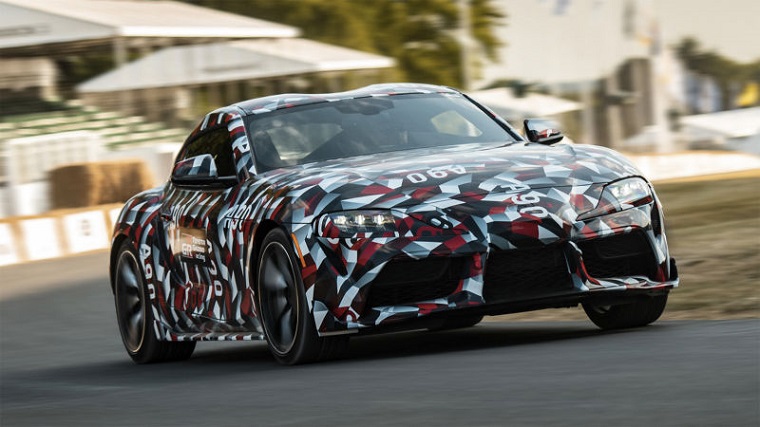Toyota Supra Chief Engineer Shares His Thoughts on the Car
Though the upcoming, next-generation Toyota Supra was revealed at the Goodwood Festival of Speed, it was still dressed in full camouflage and little information was shared about the car.
Fortunately for us, Toyota’s UK division has just released an interview-style blog featuring the project’s chief engineer, Tetsuya Tada, in which he explains just what it took to get the Supra made, whose development began in 2012.
According to Tada, seven years is a long time. “The normal cycle for car development is around three years but with this project we wanted to make absolutely sure it was right,” he said. After driving the Toyota Supra up the Goodwood hill, Tada claimed it was the happiest day of his life.
Tada then compared the Toyota Supra to the existing 86 sports car. He says that in designing the Supra, they tried to make it overwhelmingly better than the 86 in just about every way. For instance, while the 86 has an impressively low center of gravity, the Supra’s is even lower.
“It’s actually the same level of rigidity as the Lexus LFA supercar,” Tada said. “It has been achieved without using carbon fiber so we could keep the price point at an affordable level. That was the most difficult thing to achieve.”
In other interviews, Tada also shed light on the challenges of collaborating with BMW. He was quick to dispel to notion that the Toyota Supra and BMW Z4 would be alike in the same way as the Toyota 86 and the Subaru BR-Z.
“When we compare the previous collaboration with Subaru, this time it was much more of a challenge. The cultural barrier of German engineers, proud of their engineering, and our pride of what we do best collectively as teams from each firm was something astonishingly different.”
He also had a number of interesting stories about how BMW and Toyota learned from each others’ processes and how both companies came away impressed with each other. He specifically noted the amount of time BMW devoted to road testing and final tuning for every test mule; and the amount BMW spent on R&D had Tada worried for some time that Toyota wouldn’t be able to make a profit off of the car.
On the other hand, “BMW couldn’t believe how extensive some of our quality and efficiency studies were as parts came into shape one by one,” Tada described. “We would take every bit down to a fastener or rivet, and put it through our stringent quality control and a dozen other testing, we’d ship thousands of parts back to Japan for analysis. That is normal to us.”
But despite the positive relationship with BMW, Toyota’s benchmark for the Supra is the Porsche Cayman. Tada says the car will be presented in all of its glory shortly, along with more details, so make sure to stay tuned if you can’t wait for the revival of the nineties’ greatest JDM.

The News Wheel is a digital auto magazine providing readers with a fresh perspective on the latest car news. We’re located in the heart of America (Dayton, Ohio) and our goal is to deliver an entertaining and informative perspective on what’s trending in the automotive world. See more articles from The News Wheel.


